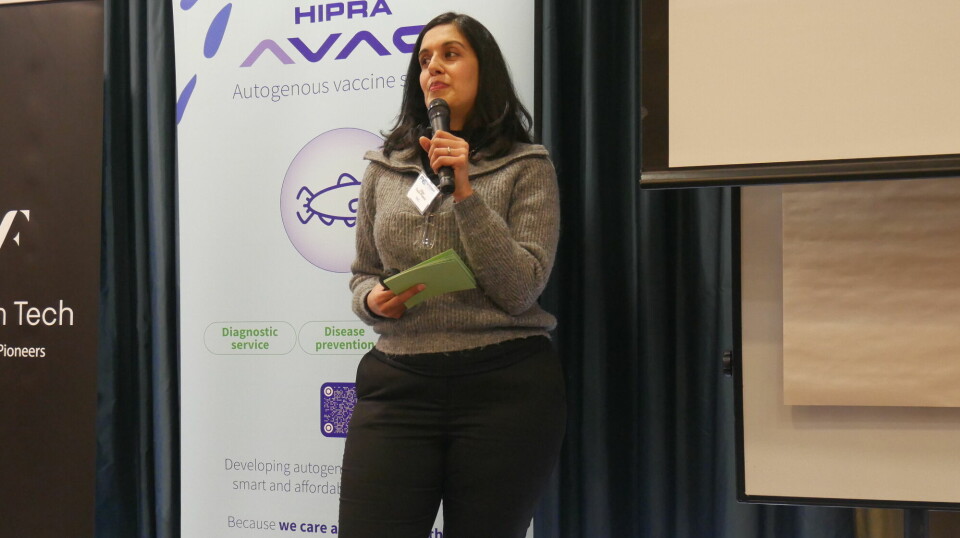
Plankton identification training course ready for trial
Programme aims to give Scotland’s fish farmers better warning of harmful algal blooms
A training course designed to standardise the way in which the presence of harmful plankton is reported across Scotland’s fish farming sector is to be piloted imminently.
The course comprises five short online modules and an optional training day at the Scottish Association for Marine Science (SAMS) at Dunstaffnage, near Oban.
It was devised by the Sustainable Aquaculture Innovation Centre (SAIC), SAMS, and rural skills organisation Lantra after fish farmers, fish vets and the Scottish and UK governments identified the need for consistent sampling, identification, and centralised reporting of 15 key species of algae that can exacerbate gill disease in farmed salmonids.
SAIC was awarded £250,000 from the Department for Environment, Food & Rural Affairs’ (Defra) UK Seafood Fund to create the training programme and contributed a further £105,000 itself.
Pilot course
Development of the course began in June last year and has been steered by a committee that included finfish producers and regulators.
Dr Jillian Couto-Phoenix, head of skills and talent at SAIC, said she was now recruiting 25 individuals to pilot the online course, 12 of whom would also try out the in-person training at SAMS.
Speaking at the annual conference of the Fish Veterinary Society (FVS) in Edinburgh last week, Couto-Phoenix said the course was tailored towards the needs of fish farm workers taking daily water samples but could be understood by and be useful to a wide range of people.
“The course is designed to be modular and freely available online. It’s also designed to be accessed remotely so you don’t have to go anywhere to undertake the training,” explained Couto-Phoenix.
Animated films
“The first module comprises a series of very short, animated films and is an introduction to phytoplankton species, how blooms are caused and the role of climate change in bringing this about.
“Modules 2 and 3 are called a virtual experience because they are a series of videos that you can watch to learn the standardised operating procedure and see step-by-step instructions on centralised reporting.
“The fourth module is in-person optional training at SAMS for one day. Individuals or companies have the option of sending their operatives over to SAMS in order to undertake the training. For the duration of our Defra funding this will be free.
“Modules 5 and 6 are about mitigation, and this is really trying to establish best practice because it’s quite new, and we’re hoping to get information from lots of different people, especially producers, about what they think the best ways of dealing with these 15 species are.
“The last module is [also] a future focus which will detail how we might tackle these sorts of threats in the future.”
Making it easy
A poster will also be available for laboratories that will illustrate the 15 risk species plankton and can be used as a quick reference, and there will be a manual that trainees can download if they want more details than are included in the videos.
There will also be an Excel spreadsheet designed to reduce the cells-per-millilitre calculations carried out by people monitoring plankton. “Sampling has to be done every day, so we’re trying to make it easy for people,” said Couto-Phoenix.
The training aims to ensure all producers across the UK are following standard operating procedures, developed as part of the Farmed Fish Health Framework, for detecting and reporting HABs in open coastal waters, leading to more effective monitoring and reporting that can be shared across the entire sector. A better understanding of any patterns will help to inform predictive models and early-warning systems.
£6m per site
In 2021, the reported cost of the required measures to treat fish and recover from a HAB incident was around £6 million for a single site. With the occurrence of blooms closely linked to rising water temperatures and climate change, incidents are increasing in frequency.
Fish farmers can sometimes mitigate harm to fish by stopping feeding, which keeps the stock deeper in the pen, and by adding oxygen to the pen. Fish can also be transferred by wellboat to a safer site, if a site is available and farmers have sufficient warning and resources.
In Chile and western Canada, where HABs have been a long-standing problem, bubble curtains are used in a bid to keep blooms from entering pens.
Some blooms can be seen by satellite monitoring, however, sometimes the first indication that a farmer will get that there is a HAB event occurring is when fish start dying in the pen.
HABs can lower the dissolved oxygen content in water, and some types of plankton can cut or block the gills of fish, causing death or leading to other issues such as amoebic gill disease (AGD).






















































